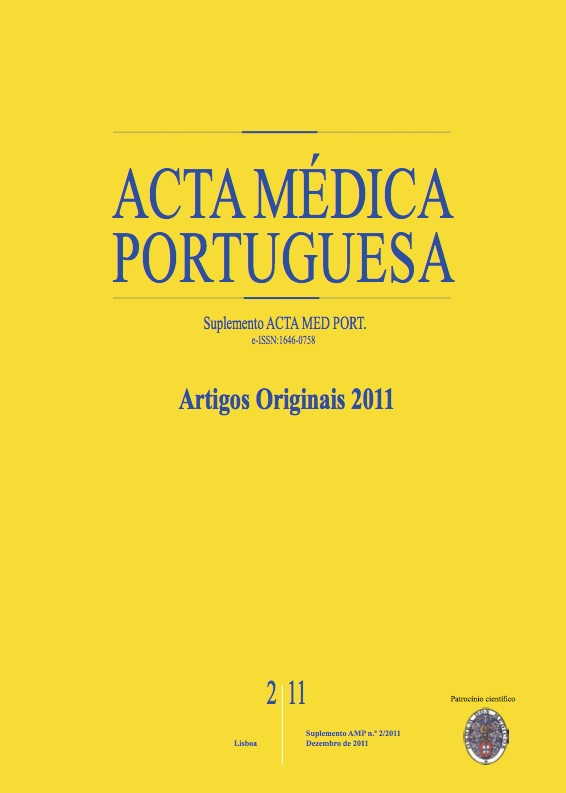Computer-based quality-of-life monitoring in head and neck cancer patients: a validation model using the EORTC-QLQ C30 and EORTC- H&N35 Portuguese PC-software version.
DOI:
https://doi.org/10.20344/amp.1481Abstract
Quality of Life is a distinct and important emerging health focus, guiding practice and research. The routine Quality of Life evaluation in clinical, economic, and epidemiological studies and in medical practice promises a better Quality of Life and improved health resources optimization. The use of information technology and a Knowledge Management System related to Quality of Life assessment is essential to routine clinical evaluation and can define a clinical research methodology that is more efficient and better organized. In this paper, a Validation Model using the Quality of Life informatics platform is presented. Portuguese PC-software using European Organization for Research and Treatment of Cancer questionnaires (EORTC-QLQ C30 and EORTC-H&N35), is compared with the original paper-pen approach in the Quality of Life monitoring of head and neck cancer patients. The Quality of Life informatics platform was designed specifically for this study with a simple and intuitive interface that ensures confidentiality while providing Quality of Life evaluation for all cancer patients. For the Validation Model, the sample selection was random. Fifty-four head and neck cancer patients completed 216 questionnaires (108 using the informatics platform and 108 using the original paper-pen approach) with a one-hour interval in between. Patient preferences and computer experience were registered. Quality of Life informatics platform showed high usability as a user-friendly tool. This informatics platform allows data collection by auto-reply, database construction, and statistical data analysis and also facilitates the automatic listing of the questionnaires. When comparing the approaches (Wilcoxon test by item, percentile distribution and Cronbach's alpha), most of the responses were similar. Most of the patients (53.6%) reported a preference for the software version. The Quality of Life informatics platform has revealed to be a powerful and effective tool, allowing a real time analysis of Quality of Life data. Computer-based quality-of-life monitoring in head and neck cancer patients is essential to get clinically meaningful data that can support clinical decisions, identify potential needs, and support a stepped-care model. This represents a fundamental step for routine Quality of Life implementation in the Oncology Portuguese Institute (IPO-Porto), ORL and C&P department services clinical practice. Finally, we propose a diagram of diagnostic performance, considerating the generalized lack of mycological diagnosis in Portugal, which emphasizes the need for a careful history, focused on quantifying the latency period.Downloads
Downloads
How to Cite
Issue
Section
License
All the articles published in the AMP are open access and comply with the requirements of funding agencies or academic institutions. The AMP is governed by the terms of the Creative Commons ‘Attribution – Non-Commercial Use - (CC-BY-NC)’ license, regarding the use by third parties.
It is the author’s responsibility to obtain approval for the reproduction of figures, tables, etc. from other publications.
Upon acceptance of an article for publication, the authors will be asked to complete the ICMJE “Copyright Liability and Copyright Sharing Statement “(http://www.actamedicaportuguesa.com/info/AMP-NormasPublicacao.pdf) and the “Declaration of Potential Conflicts of Interest” (http:// www.icmje.org/conflicts-of-interest). An e-mail will be sent to the corresponding author to acknowledge receipt of the manuscript.
After publication, the authors are authorised to make their articles available in repositories of their institutions of origin, as long as they always mention where they were published and according to the Creative Commons license.









